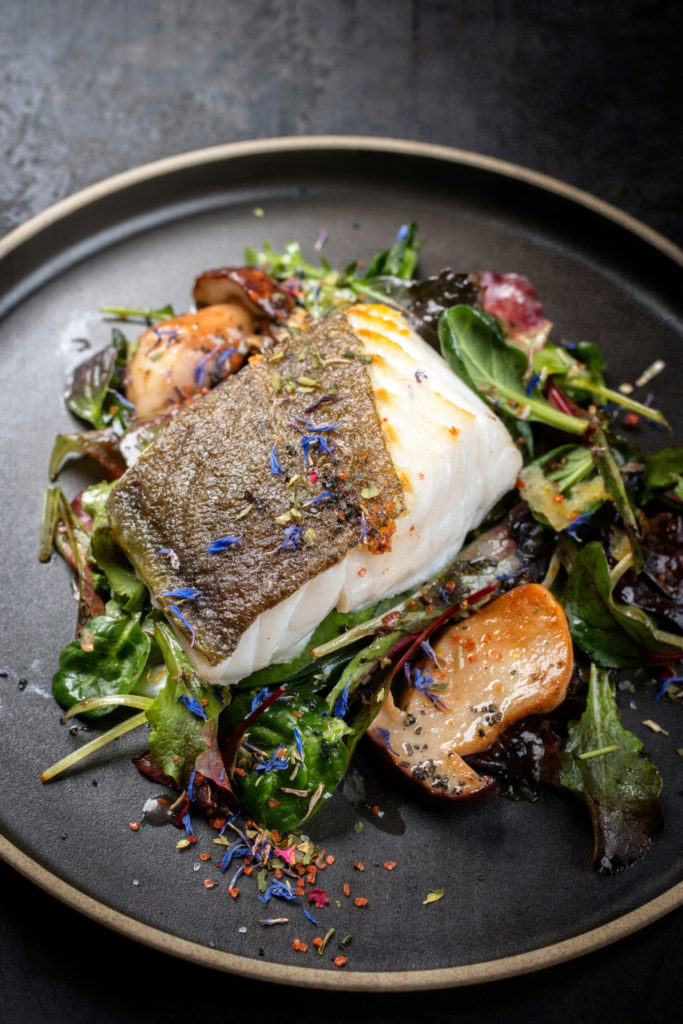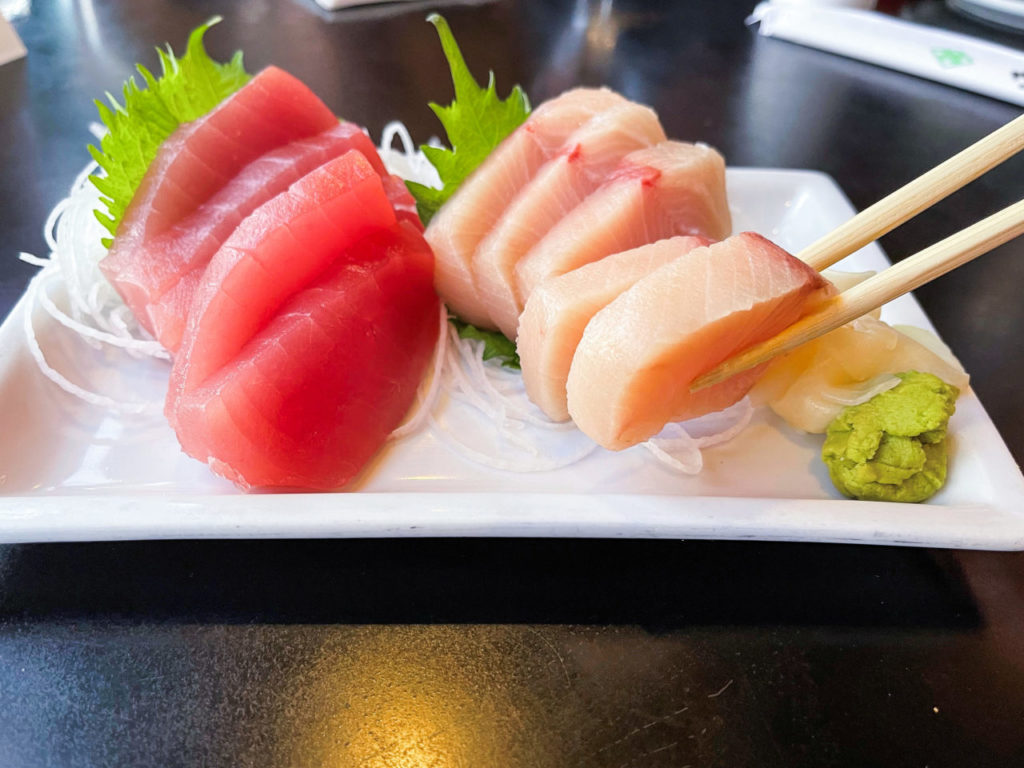Thanks to fish’s vast diversity, numerous ways to cook it—or not cook, if you’re gripping a nugget of sushi between two chopsticks—and high marks for being a healthy, sustainable protein, you’d think we’d be enjoying a lot of it.
But if the thought of buying fish at the grocery store or ordering it at a restaurant has you saying, “No thanks,” know you’re not alone. The Food Marketing Institute’s Power of Seafood survey in 2019 discovered that 56 percent of Americans eat seafood twice a month. Only one out of five adults is a frequent fish eater, or more than two times a month.
If you’re confused about the difference between the words “seafood” and “fish” it might help knowing that the meaning depends on who’s talking about it.
Cookbooks usually define seafood as shellfish, including mussels, oysters, shrimp and lobster; the word “fish” is used for finned animals. But the U.S. Department of Agriculture lumps any aquatic animals into the word “fish,” whether they’re fresh or saltwater sources, finned, crustaceans or mollusks. And Monterrey Bay Aquarium Seafood Watch, a leader in the global sustainable seafood program, includes finned fish in its definition of seafood. Aquatic birds aren’t included in any reference to seafood.
The culprits to why fish or seafood isn’t as popular as it could be are many: Overcooked fish can be rubbery, while undercooked fish can have a slimy texture. Older methods of freezing fresh fish made it mushy after defrosting but leave it too long in the fridge and you’ll quickly smell it spoiling. And when dining out, if you’re not a fish fan, you’re not going to choose it over a juicy steak.
That’s a lot of dings against the denizens of the deep. But there are many tasty fish in the sea that are worth giving another chance.

Fried Danish skrei cod fish filet with porcini mushroom and lettuce
Why is fish so good for you?
According to Seattle Fish Co.’s 2021 Impact Report, “Relative to terrestrial livestock, fish and shellfish convert more of the food they eat into edible protein, are less reliant on freshwater resources, and have less environmental impact.”
“Fish is a unique protein source because it contains all 20 amino acids, the molecules that combine to form proteins. They structure our tissues, help grow and repair muscles and support our immune system and proper hormone function,” says Adams County Health Department registered dietician Dana Sobel. “And proteins are needed for every reaction in our bodies.”
Compared to other animal products, fish has the highest omega-3 fatty acid levels. That’s important: These healthy fats support heart and brain health by lowering triglyceride levels that contribute to plaque buildup in arteries and reducing the risk of heart disease and stroke. The American Heart Association champions eating two (3-4 ounce) servings of fish every week.
Moreover, high levels of two omega-3 fatty acids in fish oil reduce inflammation, which stresses our bodies and causes a rash of illnesses.
If you’re not convinced yet, fish is full of minerals, including calcium to aid muscle contraction, heart regulation and nerve function. Calcium also promotes strong bones and teeth and, because it helps generate new cells, gives skin a healthy glow.
It gets better: Fish is high in zinc for healing wounds and anti-inflammatory properties; iron—found in oysters, clams, sardines and mussels—which increases oxygen distribution from the lungs to every part of the body, reducing fatigue and supporting steady energy levels; and magnesium, a micronutrient that Sobel says nearly half of Americans don’t get enough of. Magnesium is the superhero of minerals—it helps our bodies produce energy and get a good night’s sleep.
Trying different fish varieties
As much as the idea of glowing skin and a good night’s sleep are tempting, new foods can be overwhelming. Sobel says to go slowly when trying something unfamiliar. Don’t get stuck limiting yourself to one type if you didn’t like it the first time.
“We get caught thinking salmon is the only option. I encourage people to try something new, maybe once a week, because there’s so much and our tastes change and evolve. And you might be pleasantly surprised with a different preparation and how it tastes better.”
She suggests opening the door to eating more fish by making a Caesar salad dressing with a tin of anchovies—a standard ingredient in this Italian classic—one you’ll barely know is there.
Fish is also easy to cook while preserving its healthy benefits. In addition to grilling or baking, air fryers can cook it without adding fat. Or, let fish pull flavors from other ingredients: Wrap it in parchment paper packets topped with fresh vegetables, herbs and lemon. Pull it together and toss grilled or baked fish into pasta or scoop it up in tortillas for fish tacos.
When buying fish or shellfish at the grocery store, it’s best to buy it from the fish case if you’re unfamiliar with a species. Once you know the taste, frozen fish is fine, although it won’t be at its best flavor.
For fillets, look for meat that’s firm, moist and not discolored or has rough spots. It shouldn’t have a strong fishy smell; the best bet is a mild cucumber or sea air aroma. If you’re buying a whole fish, check its eyes: they should look clear, plump, shiny and not sunken. Ask the fishmonger questions: when did the shipment arrive, the source, what will it taste like and how to cook it. Be open to trying a different species than one you’ve set your sights on; the freshest option is the best choice. Take fish home immediately, store it in the coldest part of the refrigerator and cook within 24 hours for best quality.
If you want to know whether a species is sustainably sourced, Monterrey Bay Seafood Watch has printable or digital pocket guides to help identify the best seafood options before buying or ordering at a restaurant.
Savanna Ronco, marketing and brand specialist at Seattle Fish Co., offers tips for ordering fish and seafood
in restaurants:
1. Don’t be boxed in with a set list of seafood species. Ask your server or the chef for recommendations if the species is new to you. Just like produce, order fish when it’s in season for the freshest product. Halibut, wild salmon, mahi, wreckfish, lingcod and mackerel are examples.
2. Seafood specials are constantly changing, making it a great way to taste a variety of species. Since they’re envisioned and executed by the chef, the result is delicious, seasonally inspired plates.
3. Order “family style” when dining out to try more fish. Ronco says this is her favorite dining out style: “It creates great conversation and allows for the possibility of trying more things on the menu than you otherwise would have.”
4. Seafood often raises issues of sustainability and responsible sourcing for consumers, including questions about how a fish variety is caught, whether it’s farm-raised or wild-caught, and additives in fish before it lands on your plate. “Don’t be afraid to ask questions or do your research ahead of time from reputable, science-based sources,” Ronco wrote in an email. “Many chefs are passionate about responsibly sourcing the proteins they bring into their restaurants and have high standards for both quality and sustainability.”
The FDA has guidelines to limit mercury in our diets—swordfish, shark and orange roughy are a few of the varieties with the highest mercury levels and should be avoided. Mercury can be traced to coal burning power plant emissions, paper mills and is sometimes an ingredient in farm fish feed. It’s particularly harmful for women who are pregnant or are trying to conceive, nursing mothers and children.

Where to go for good fish at local restaurants:
Seattle Fish Co. has provided a vast selection of seafood throughout Colorado and the Rocky Mountain region since 1918. From fish with fins or shells to smoked selections, the company has developed long-term relationships with fishermen and farmers that highlight sustainability and freshness.
Ronco’s team recommends these NOCO restaurants to find the best fish for your plate:
Fort Collins:
Jax Fish House & Oyster Bar
Bistro Nautile
The Regional
Smokin Fins
Sonny Lubick’s Steakhouse
Johnstown:
Bonefish Grill
Greeley:
Lucky Fins
Author Emily Kemme’s Recommendations for Sushi Lovers:
Sushi JeJu, Fort Collins
Masa Hibachi Steakhouse & Sushi,
Fort Collins
___________________________________________________
Emily Kemme is an award-winning novelist and Colorado food writer.







